#Jiří Brdečka
Text
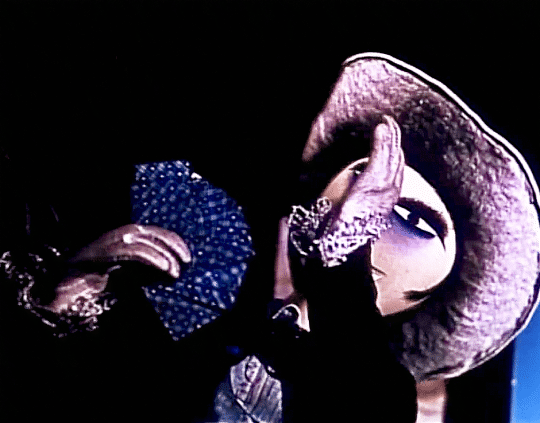



Song of the Prairie (Árie prérie)
1949, dir. Jiří Trnka IMDB
#Czech#čumblr#Czech cinema#Czech film#Song of the Prairie#Árie prérie#Jiří Trnka#Jiří Brdečka#film#film edit#classicfilmedit#short film#western#comedy#parody#spoof#animation#czech animation#european animation#central Europe#european cinema#european film#Czech Republic#Czechia#1940s#gif#Czech pop culture
119 notes
·
View notes
Text



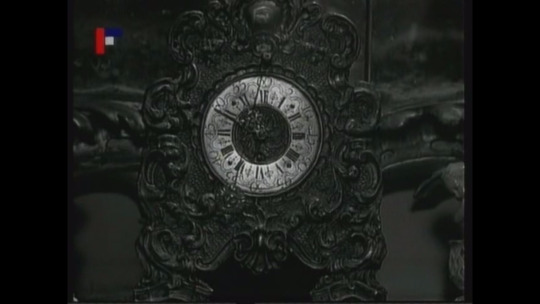
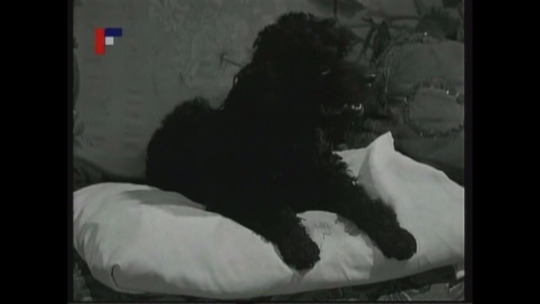

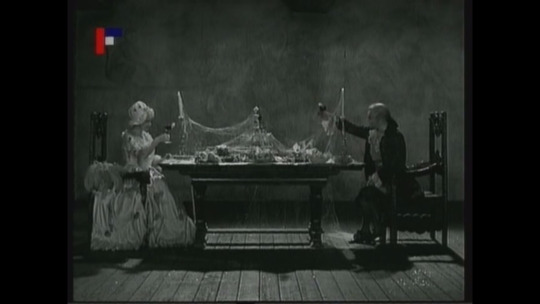
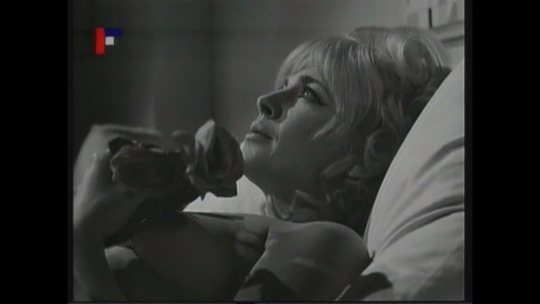
Prague Nights
1969 ‘Pražské noci’ Directed by Jiří Brdečka, Miloš Makovec, Evald Schorm
0 notes
Text
PRAGUE NIGHTS (1969)
Deaf Crocodile Films, in association with distribution partner Comeback Company, is thrilled to announce they will release a new restoration of the late 1960s Czech occult/horror anthology PRAGUE NIGHTS (PRAŽSKÉ NOCI), featuring episodes directed by Miloš Makovec, Jiří Brdečka and Evald Schorm. In the vein of horror anthologies like Mario Bava’s BLACK SABBATH, the long-unseen PRAGUE NIGHTS is a gorgeous and supernatural vision of ancient and modern Prague: caught between Mod Sixties fashions and nightmarish Medieval catacombs, and filled with Qabbalistic magic, occult rituals, clockwork automatons and giant golems.

“PRAGUE NIGHTS is one of the rarest and most mysterious anthologies from the late Sixties,” says Deaf Crocodile Films’ Co-Founder and Head of Distribution Dennis Bartok. “It was the brainchild of animator, screenwriter and director Jiří Brdečka, who conceived of the film and directed the most amazing of its three episodes, ‘The Last Golem,’ set in the medieval Jewish community in Prague. The film was actually in production during the Soviet invasion of Prague in 1968, although the movie takes place centuries and worlds away from the tanks rolling through the streets of the city. It’s been something of a lost film for decades with only brief clips available online, so we’re incredibly excited to be working with Irena at Comeback Company and the Národní filmový archív to bring PRAGUE NIGHTS to the U.S. for the first time.”

Says Craig Rogers, Deaf Crocodile’s Co-Founder and Head of Post-Production and Restoration: “Dennis has unearthed yet another forgotten gem! I’ve always had a fondness for anthology horror films (CREEPSHOW, TALES FROM THE CRYPT, etc). PRAGUE NIGHTS is in that same vein -- with the bonus of being produced in the swinging 60s!”
vimeo
Like this? Visit our new website! www.deafcrocodile.com
0 notes
Photo



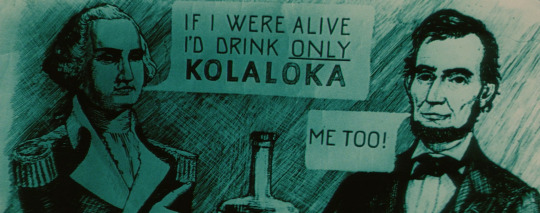




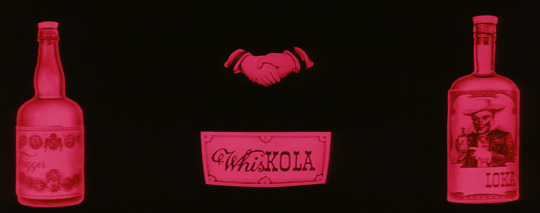

“Liquor has never been a gunman’s best friend. It weakens the whole body and particularly one’s accurate aim. So, bartender, a glass of Kolaloka lemonade for me.”
Limonádový Joe aneb Koňská opera / Lemonade Joe or Horse Opera (1964) dir. by Oldřich Lipský.
#Limonádový Joe#Limonádový Joe aneb Koňská opera#Lemonade Joe or Horse Opera#Oldřich Lipský#Jiří Brdečka#Czechoslovak#Czech#Czechoslovak Cinema#Czech Cinema#Parody#Comedy#Musical#Western#Adventure#My Screenshots
146 notes
·
View notes
Text
youtube
O skleničku navíc
4 notes
·
View notes
Text
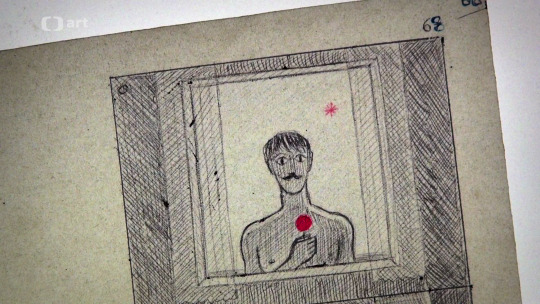

Universum Brdečka (2017)
1 note
·
View note
Text
James Bond conquers Czechoslovakia (or not?)
In the sixties, James Bond was everywhere. But even though it was a big worldwide phenomenon, it was hardly accessible to everyone. Czechoslovakia was a socialist country with a strict regulation system for film industry, so it is not surprising that James Bond films were not screened until the end of communist regime in the early nineties. But somehow James Bond had a notable presence in Czechoslovakia. It was a name known to average film fans. They heard about Sean Connery, Bond girls, and some of them could describe a detailed plot of the movies. How is it possible? This article discusses media discourse about James Bond, and how it created a basis for a familiarization with the James Bond film franchise.
The Czechoslovak film industry was centralized in the state-controlled institution between 1945 and 1990. Every imported film was approved by the state. Very broadly speaking, genre cinema from the Western countries wasn't ideologically desirable. Only around 5–10 British films were screened every year in Czechoslovakia in the '60s and '70s . Mostly they were kitchen sink dramas (A Taste of Honey or Saturday Night and Sunday Morning) or literary adaptations (Tom Jones, Far from The Madding Crowd). The action adventure genre was presented by French comedies (super popular Fan-Fan the Tulip and similar films) and by French art films (Breathless, Pierrot le fou). Important were leftist qualities of these movies. Approved were also some James Bond knock-offs, for example West German movies about FBI agent Jerry Cotton. Some people would say that James Bond and similar films could not be shown because of censorship, but that is not true. These films were not screened, because they just were not bought into the Czechoslovak distribution. There were, of course, reasons for that.
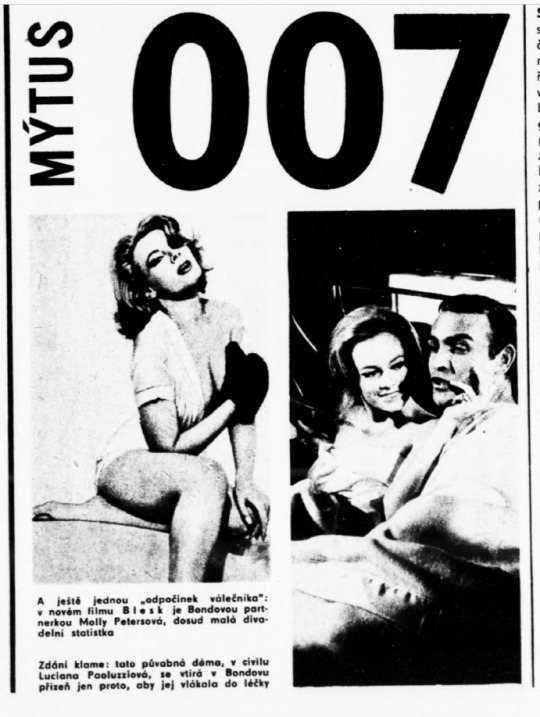
So what exactly was problematic in James Bond films? First, it was simply a country of origin. It was not just that Bond was British (= Western country). In Czech press were Bond movies often described as American, which is at least partly true: distribution rights were owned by the American company United Artist. Also values presented by the films were values that were in Czechoslovakia identified with capitalist countries, especially with the United States. But mostly, Bond wasn't a preferred type of a hero for a socialist audience. He was rich, obsessed with expensive cars and clothes, violent and sexual. He was not nice. He was not a socialist hero. A Polish film historian Jerzy Toeplitz wrote about a bad influence of James Bond books and films, and the article was translated for Panoráma zahraničního filmového tisku in 1966. He wrote that James Bond books are meant for a Western reader who is “succumbed to the amuck of accumulating consumer goods.” That is related to the fact that the film series itself was perceived as existing just with a goal of gaining money. A lot of articles were stating (and mocking) the way the films were used for merchandise.
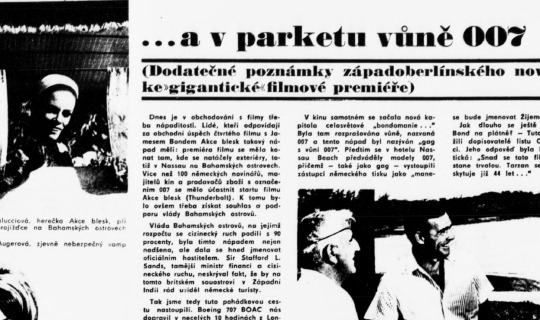
James Bond was a perfect picture of a capitalist country: cruel, brutal, too erotic, sadistic and racist. Which are all fair points, but they weren't said with an aim to open any kind of discussion. The goal was purely ideological. “We must build a hero – either a man or a woman of our time who upholds our humane socialist morale – and pose him or her against this mythical hero who can do anything, nothing is a nuisance to him, who overcomes everything smoothly and – like James Bond, for example – has the right to commit senseless murders. This represents an ideological conflict with the bourgeoisie, one that is essential and without compromise.” (Film a doba, 5, p. 243).
Perhaps the most interesting aspects were constant mentions about racism. However a language that was used to describe racism in James Bond films was very racist itself. That is actually not surprising because Czechoslovak people had – and still have – lots of racist issues. Lubomír Oliva, one of prominent Czechoslovak film critics, described James Bond this way: “James Bond embodies a new type of Superman. He is coldy cruel and dismissive of the weak. He kills without remorse, because that is his job. Multiple scenes from the trilogy show racism, which is subconscious, automatic, and therefore more insidious. Is he the Tarzan among nuclear weapons? Or perhaps he is a different but more dangerous type of a primitive: a close relative of the Nazi Übermensch.” (Kino, 1965/11, p. 13). It is also very telling to look closely at the photos used in that article – Bond shoots, Bond fights, Bond smiles like a crazy lunatic while he kills people. The writing itself is very suggestive, evocative and even vulgar. Oliva loves to mention every specific and cruel thing Bond does in the films in details. One has to ask – what if the effect of listing all the bad things was quite opposite? Was not public more curious to watch it?
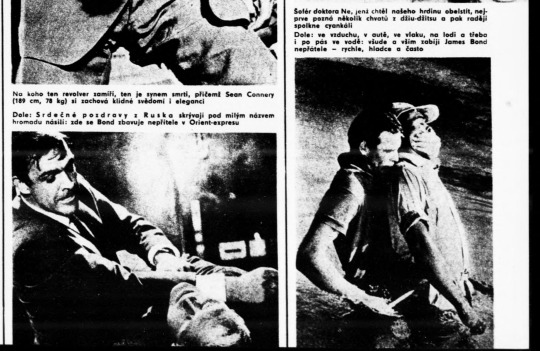
Maybe the screenwriter of many amazing Czech genre films (Adela Has Not Had Her Supper Yet, Lemonade Joe) Jiří Brdečka was a little bit fond of Bond, right? Well – not really. The most problematic part of Bond films, according to Brdečka, was their anti-communist aspect. A majority of the villains were communists and often from USSR, which was not acceptable. In Brdečka's article in Divadelní a filmové noviny he compared people of color to communists. James Bond films are full of prejudice against both, and that is simply bad. He also wrote: “This hero is deeply engaged and his engagement compels him to eat communists and colored people for breakfast – both at the same time if possible. This tells us that James Bond may not find fertile soil around these parts.” But Brdečka at least acknowledged that the films were really well made. And concluded with: “[The films] are excellent crap, with an emphasis on crap.” (Divadelní a filmové noviny, 1965/9-10, p. 10). Galina Kopaněva (another a very prominent and very popular film critic) took one step further. Not only the films themself are bad and stupid, the loving audience from Western countries is stupid as well: “[young people] devour the elegant Bond and his precise punches to the stomach. They loosen their ties a la Bond when they see the closeups of of Bond girls’ super-breasts, they bray with enthusiasm when there is an especially well done murder, they clench their fists as they watch crazy car chases on serpentine mountain roads, and they succumb to the pleasant shivers caused by torture scenes.” (Film a doba 1965/6, p. 323). The infantilization of audience was sometimes used while describing popular culture but was not broadly used for describing James Bond.
So, now we know that James Bond was bad for Czechoslovak people. Or at least according to the prominent film critics and state-run film industry. But how is possible that James Bond became a well known phenomenon in communist Czechoslovakia? It was not allowed to show James Bond in the cinemas but somehow people knew who James Bond is. There were also special namings for James Bond films – bondovky (that is used still today) and bondiády. People were obsessed with them, even though they did not have an option to watch them.
The most obvious answer for James Bond popularity is that he was a constant presence in the Czechoslovak film press. He was – in his invisibility – totally visible. Bond films were often mentioned (and sometimes analyzed) in the press targeted towards film professionals (Interpressfilm) or “smart” film fans (Film a doba, Divadelní a filmové noviny) and in popular film magazines (Kino). Almost every Czechoslovak film critic had an opportunity to see a James Bond movie at some international film festival or in a cinema abroad. That means that they wrote reviews for Czechoslovak magazines. But the reviews were not only about qualities of the films. More often the critics retold the plot with every possible detail (including the ending of the film). The magazines also published spreads about James Bond phenomenon in general (including lots of photos), interviews with actors or directors, short notes about upcoming films or about changing of the actors. The articles were a weird mixture of positive and negative. For example, you would have a long text about Sean Connery, and in this article author would write about how wonderful actor Connery is. But they would also mention that Connery deserves better than Bond. Or you would have a big spread about a James Bond movie premiere, and author would mention that film is spectacular and fun to watch, but also that it is still a low and decadent film.
Another way to get familiar with James Bond were the books by Ian Fleming. Three of them were published in Czechoslovakia: Dr No (Doktor NO, 1968; both Czech and Slovak version), View to a Kill (collections of short stories Ve jménu zákona, 1969) and Goldfinger (Zlatý fantóm, 1970, with a film cover and a lot of photos inside the book). The rest of the stories was published after 1990.
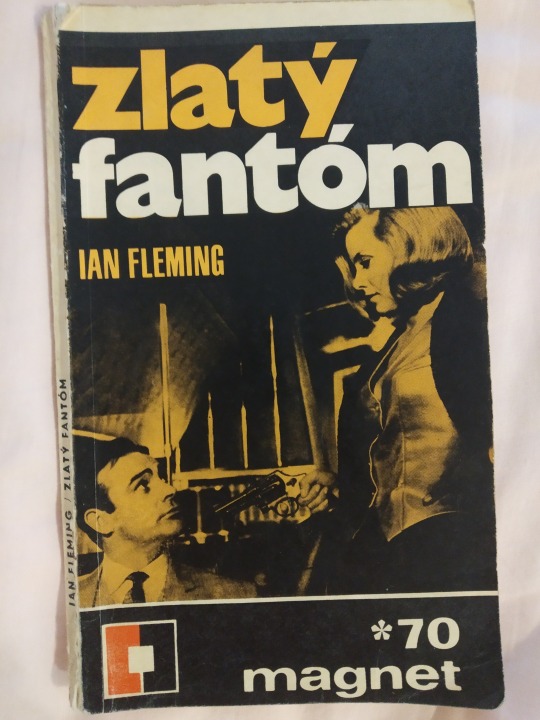
Of course in Czechoslovakia were some people that managed to see a James Bond film in other countries (travelling was complicated but not absolutely impossible). Ivan Soeldner said that people used to visit strip clubs while abroad, but suddenly it was a necessity to go see a James Bond film instead. He also stated that Bond (and strip clubs) are highly overrated (Kulturní tvorba, 1965/33, p. 14). But Bond films became word of mouth sensation – not just because they were entertainment films but because what they meant. Bond films were in a way similar to popular American music or Coca-cola. People heard so much about it that it became its own animal. The efforts to minimize and ridicule Bond in press actually created by mistake an unique mythos of James Bond – almost a symbol of anti-sovietism and anti-communism, something like a forbidden fruit.
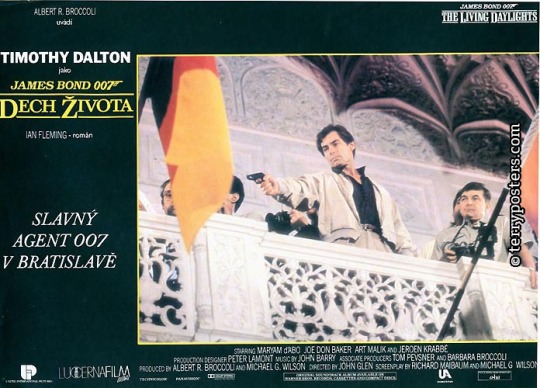
James Bond obsession calmed down a little bit with a departure of Sean Connery. Some articles were still occasionally written but not with so much passion as it used to be in the '60s. But a new opportunity to see James Bond films arrived to a Czechoslovak audience in the '80s. Videorecorders became more affordable and in 1985 there were around 80 000 of them. For Czechoslovakia was a very important phenomenon an unofficial “pirate” dubbing. So suddenly, for some people was a possibility to borrow VHS with some movies that were unavailable before (including Bond films).
The communist regime ended in Czechoslovakia in 1989 and Czechoslovak film industry started to transform. The process was slow and messy. But finally, a first James Bond film was shown in Czech and Slovak cinemas: The Living Daylights in 1992 (in English original with Czech or Slovak subtitles). This film also had a special bonus for the viewers – it took place in Bratislava, Slovakia (but it was actually filmed in Austria). A lot of older Bond films also appeared in official VHS market, and the “black pirate market” was still quite proficient during the nineties.
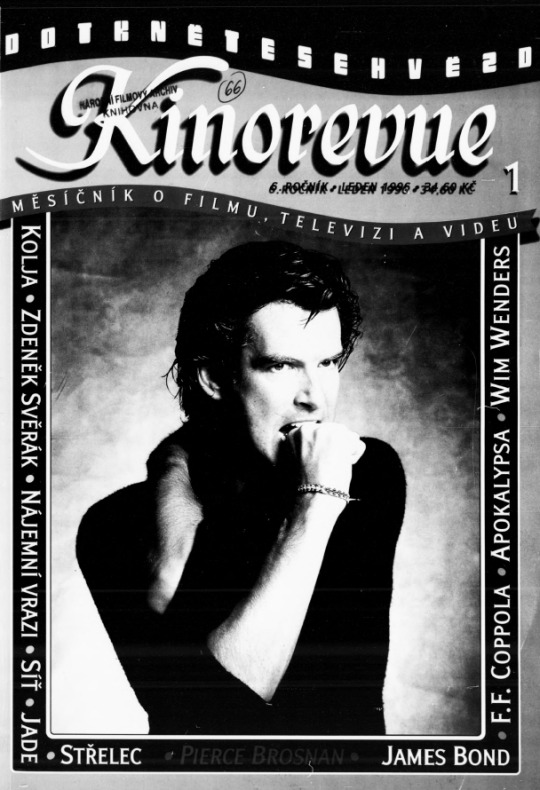
The aim of this short overview was to show the ways James Bond appeared in the Czechoslovakia for the first time. It was probably very similar in other socialist countries (Poland, USSR,…). I think that it is important to ask questions about what Bond actually meant for a different types of audiences, and how it changed over time. The answers are still relatively vague (and maybe even banal), more answers could bring complex research in daily press or oral history.
My sources: I did a quick research using a lot of articles from the '60s till early '90s. Big thanks to National Film Archive that has everything scanned in the digital library.
Periodicals: Divadelní a filmové noviny, Film a doba, Filmové aktuality, Filmové informace, Filmový přehled, Interpressfilm, Kino, Kinorevue, Kulturní tvorba, Panoráma, Panoráma zahraničního filmového tisku, Záběr
I also used my own knowledge of Czechoslovak film industry (so you need to trust me that it is all true). I tried to put all this together, and the conclusions are my own. Hopefully, it all makes sense (I didn’t went too much into details because well, this is not some kind of complex research, it is just something I did for fun)
And thank you to amazing @slippingintostockings who helped me with the translation of Czech reviews from the sixties.
#007 fest#007 fest 2020#teamcivilian#meta#james bond#classic bond#sean connery#czechoslovakia#čumblr#I's not so boring how it sounds I promise!#maaaybe just a little bit#it's niche#but I really wanted to write this#mine
27 notes
·
View notes
Photo

Lemonade Pebble (after Jiří Brdečka & Oldřich Lipský)
4 notes
·
View notes
Note
could you tell us more about the czech steampunk movies?
(at those times czechoslovak) Unfortunately I dont feel much like writing now so I will just post some videos from the movies….
I will start with the older ones which were all directed by Karel Zeman. They all have specific aesthetics, unusual practical effects and are funny and absurd.
First is The Fabulous World of Jules Verne(1958) Is a combination of few works by Jules Verne… An evil adventurer Artigas, much similar to captain Nemo wants to take over the world, and to do that he kidnaps professor Roch, who can make a doomsday device for him… Roch´s assistant Hart tries to stop Artigas and save the world…… The visual style is based on illustrations from the books.
youtube
You can also find the whole movie online on youtube, but its the quality before restoration.
Next one Is
The Fabulous Baron Munchausen (1961) Not entirely steampunkish but it has its aspects nad its definitely COOL AND ZANY so why not mentioning it.
Young astronaut Toník lands on the Moon where he encounters Cyrano de Bergerac, characters from Verne´s story From the Earth to the Moon.. and Baron Munchausen who are having a tea party on the moon.. The company mistakes the cosmonaut for a Moonman.. And they decide to show him wonders of the Earth.. shenanigans ensues
youtube
The Stolen Airship (1966) Bunch of boys steal an air ship..fly over the whole europe and over the sea..where they crash on seemingly deserted island… tbh I havent watched this one in about 10 years so…
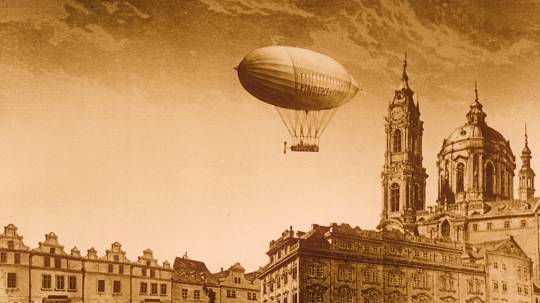
On the Comet (1970) Again based on a story by Jules Verne… A piece from one of the french colonies of africa is ripped out of the earth and moved onto huge comet flying through space… there is love.. there are problems between people of different nationalities… there are dinosaurs…
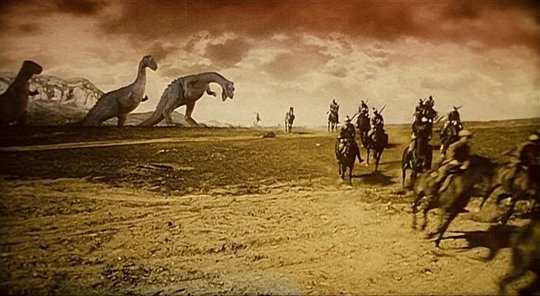
And now for my favorite sci-fi movie by Jiří Brdečka and Oldřich Lipský, which is Dinner for Adele(1977)….
Its more of a weird detective comedy story, set on the beginning of 20th century in Prague. American detective Nick Carter is tasked to investigate a disappearance of a dog… And it seems that villainous botanist Baron von Kratzmar and his carnivorous plant Adele (which is animated by Jan Švankmajer) are to blame.. and that Kratzmar plans something sinister
The whole movie is hilarous and weird + great aesthetics
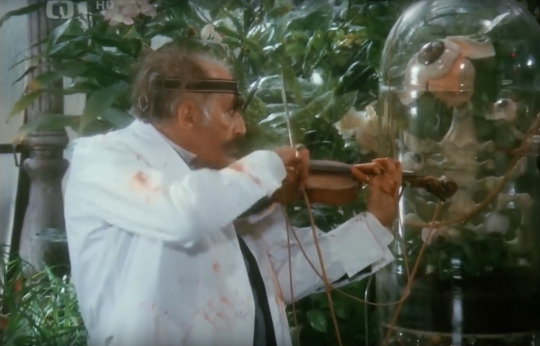

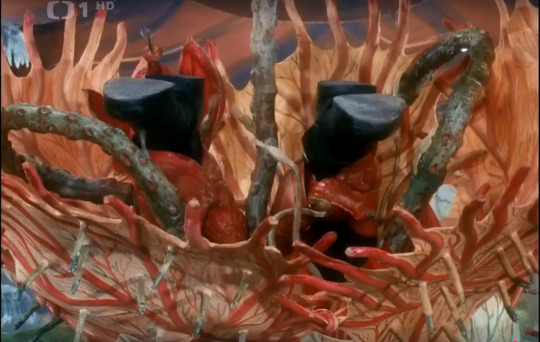
tbh funny and absurd connects all of them
40 notes
·
View notes
Text
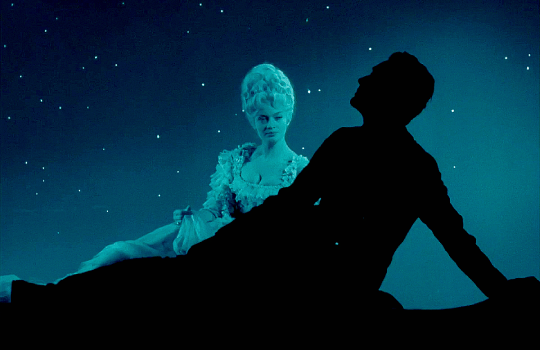
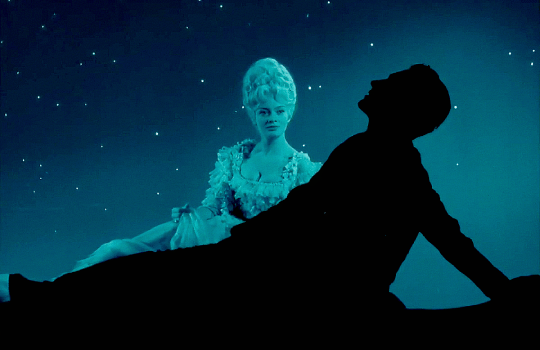
Jana Brejchová and silhouette of Rudolf Jelínek in
The Fabulous Baron Munchausen (Baron Prášil)
1962, dir. Karel Zeman IMDB
#Czech#čumblr#Czech cinema#Czech film#The Fabulous Baron Munchausen#Baron Prášil#Jana Brejchová#Rudolf Jelínek#Karel Zeman#Jiří Brdečka#Josef Kainar#Gottfried August Bürger#classicfilmedit#film#film edit#fantasy#comedy#romance#science fiction#1960s#actor#actress#central Europe#european cinema#european film#adaptation#foreign language adaptation#German literature#Czech Republic#Czechia
120 notes
·
View notes
Photo
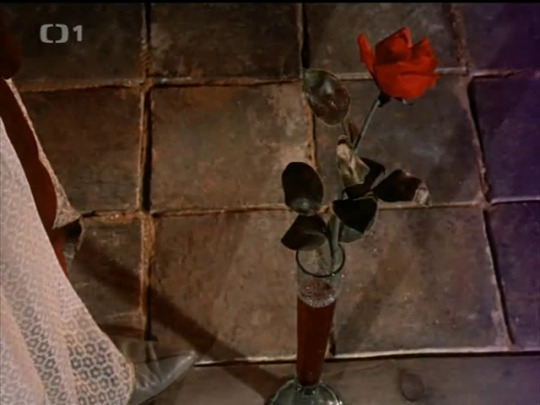

Pražské noci (Les nuits de Prague) - Jiří Brdečka, Evald Schorm & Miloš Makovec - 1968 - Czechoslovakia
#prazske noci#les nuits de prague#czech cinema#roses#flowers#screencaps#film still#jiri brdecka#evald schorm#milos makovec#czech republic
49 notes
·
View notes
Photo
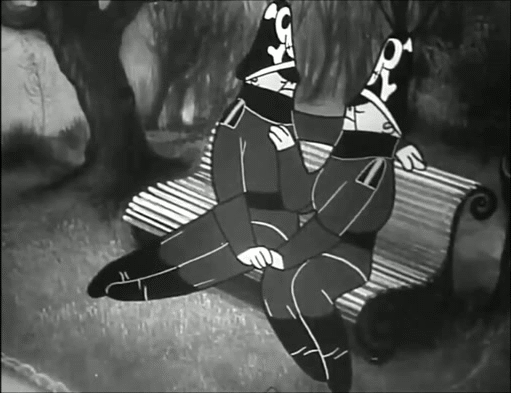


Just a little curiosity I found and thought our Shame Central posse might find interesting!
The GIFs are from a 1946 Czechoslovak animated propaganda film, “Pérák a SS“ (Springman and the SS) [X]. The hero of the film is Pérák, the Spring Man of Prague; an urban legend originating from Prague during the German occupation of Czechoslovakia. This scene with the, ah, friendly SS-officers occurs near the end of the film.
The cuddling SS-men are obviously there to make fun of the occupying force and underline their depravity. The SS was so vehemently in denial about homosexuality in its ranks, that the directors, Jiří Brdečka and Jiří Trnka, probably thought “the lady doth protest too much” and included this scene! This made me totally think about the article @killclaudia found a while back [X].
What do you guys think?
9 notes
·
View notes
Photo

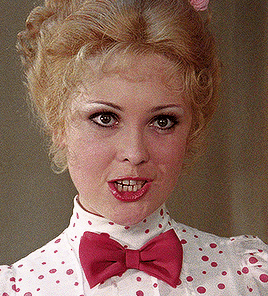
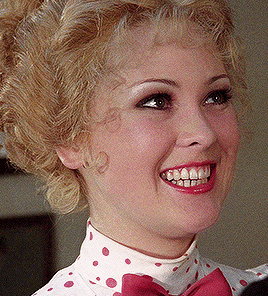

Naďa Konvalinková in Adéla ještě nevečeřela / Adele Hasn't Had Her Dinner Yet (1977) dir. by Oldřich Lipský.
#Naďa Konvalinková#Adéla ještě nevečeřela#Adele Hasn't Had Her Dinner Yet#Adele Hasn't Had Her Supper Yet#Adele's Dinner#Dinner for Adele#Oldřich Lipský#Jiří Brdečka#Czechoslovak#Czech#Czechoslovak Cinema#Czech Cinema#Comedy#Parody#My Gifs#GD
167 notes
·
View notes
Text
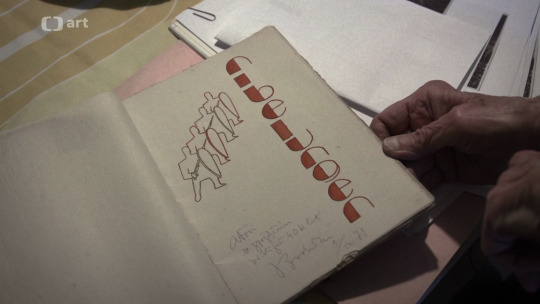
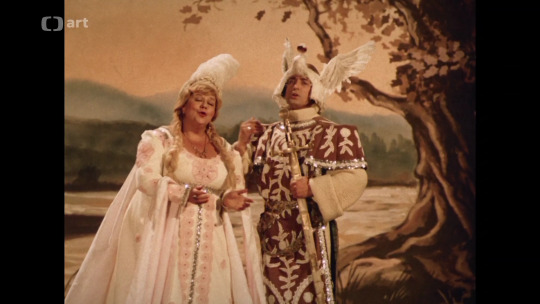
Universum Brdečka (2017)
1 note
·
View note
Text

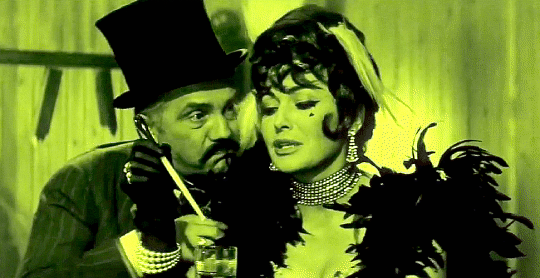

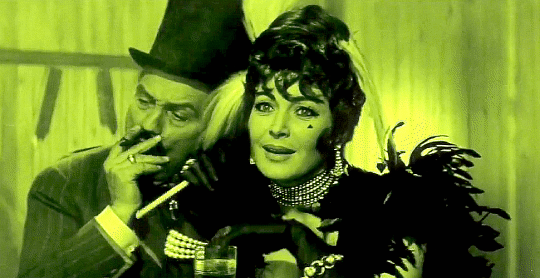
Rudolf Deyl Jr. and Květa Fialová in
Lemonade Joe (Limonádový Joe aneb Koňská opera)
1964, dir. Oldřich Lipský IMDB
#Czech#čumblr#Czech cinema#Czech film#Lemonade Joe#Limonádový Joe#Limonádový Joe aneb Koňská opera#Květa Fialová#Rudolf Deyl Jr.#Oldřich Lipský#Jiří Brdečka#western#comedy#parody#spoof#musical#1960s#classicfilmedit#film#film edit#central Europe#european cinema#european film#actor#actress#black and white#Czech pop culture#psychotronic film#campy#gif
56 notes
·
View notes